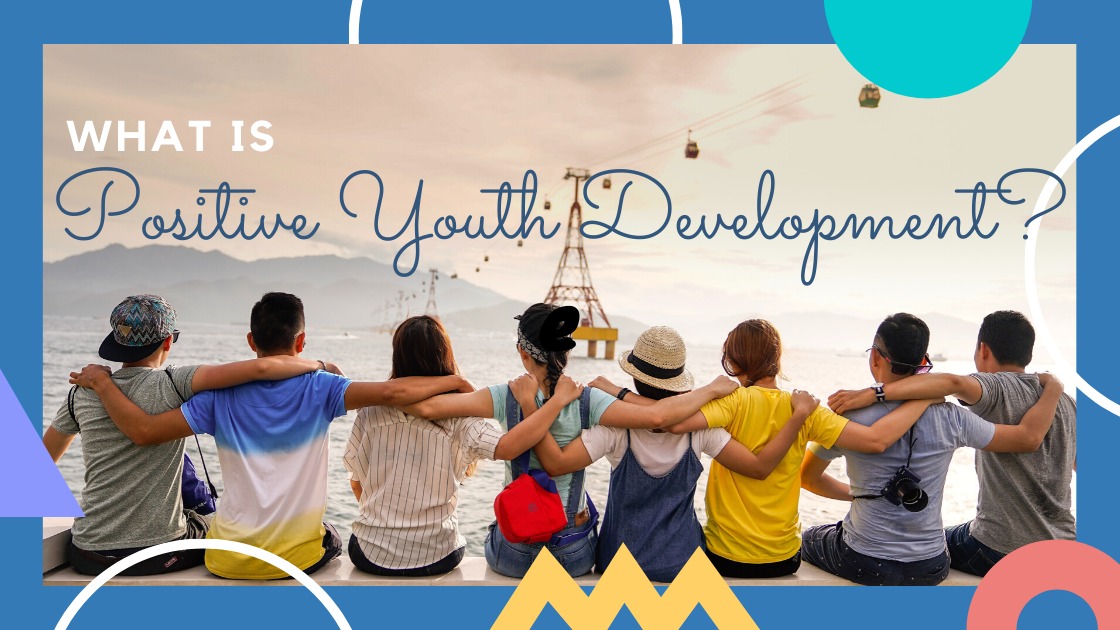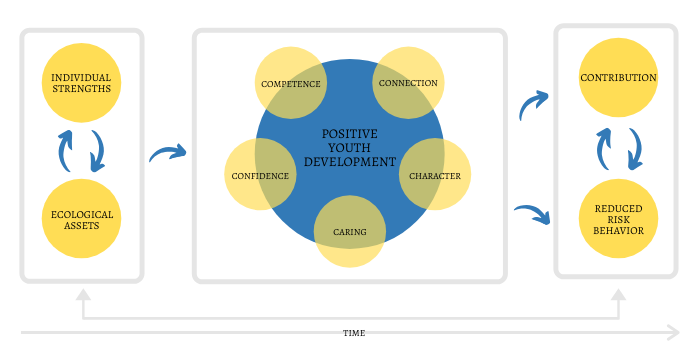22 Jun, 2020

First, we focused on understanding. Understanding the unique characteristics of the teenage brain, how different it is from the adult brain, and what those differences mean for youth on a practical level. The second piece of the puzzle is to find out what factors determine healthy youth development. Why do certain teenagers turn into happy adults with successful lives and meaningful relationships while others fall prey to addiction, abuse and poverty? And ultimately, what can we do to ensure optimal outcomes for our youth? To these questions, researchers in the field of prevention and youth development have come up with a three word answer: Positive Youth Development.
What is it ?
Positive Youth Development is an approach that has been specifically designed to suit youth’s needs and psychology. It is applied by several youth programs and organizations such as Pure Freedom to serve youth and promote healthy youth development.
But how does it work?
While it is true that we cannot predict someone’s life outcome with certainty (due to a high number of variables, developmental plasticity and the individual’s own personality), there are certain “protective factors” that can help young people to succeed and stay away from trouble. In general, three elements can really make a difference. These are:
- Experiences
- Relationships
- Environments
And to help youth pursue these essentials, we can use Positive Youth Development. As an intentional, prosocial approach, it revolves around recognizing, providing and engaging. It:
- Recognizes youth’s strengths as well as their vulnerabilities and the frequent pressures they face.
- Provides them with not only the right resources but also with support and opportunities, while fostering positive relationships.
- Engages youth in all settings, including their families, communities, schools and peer-groups.
By doing so, it seeks to foster positive attributes in youth, which in turn will help them pursue the best outcomes for their lives.
The Features of Positive Youth Development
These attributes are called “the 5 C’s” of Positive Youth Development:
- Competence: in areas such as social settings and academics,
- Confidence: in oneself and a feeling a self-worth,
- Connection: forming positive relationships,
- Character: which includes a sense of right and wrong, integrity and the respect of rules,
- Caring: a sense of sympathy and empathy towards others.
As teenagers progress in those five areas, they not only become more likely to avoid risk behavior, they are also more likely to positively contribute to society.
The good news is that contrary to previous assumptions, teenagers have control over their behaviors. Early researchers saw them as inherently at risk of developing unhealthy behaviors, but we know now that they have great potential for learning and for change, mostly because of the high plasticity of their brains. Environment alone cannot predict someone’s life trajectory either. Instead, individual strengths, environment and the 5 C’s all influence youth’s outcomes.

Reproduced from the 4-H Study of Positive Youth Development
Researchers have evaluated many programs using the approach and the results were positive. “Youth were found to be at much lower risk of having personal, social and behavioral problems than other youth. They were less likely to smoke and drink than their peers, had better grades and were more likely to expect to attend college.” Pure Freedom is one of these programs.
Pure Freedom and Positive Youth Development
As a Sexual Risk Avoidance program, Pure Freedom applies the Positive Youth Development Framework daily and effectively. We:
- Recognize that each teenager has their own sets of unique characteristics, strengths and vulnerabilities. Because we are aware that they encounter a lot of conflicting information and pressures from society in regards to relationships, love and sex, we are committed to staying up to date on the latest research and cultural trends.
- Provide teenagers with clear, scientific and evidence-based information on all things related to healthy friendships and love relationships, STDs, pregnancy and more. We do not use scare tactics as we know they can be ineffective (especially due to the fact that the teenage brain retains positive information better) but they can also backfire. We give them the opportunity to think critically about each subject as well as the support they need for skill building.
- Encourage engagement both in class and at home with their parents. Our goal is for them to recognize their immense value, boost their confidence and feel like they belong. Our educators are always open to answering any questions, without taboo or judgment.
Do you want to give the best to your youth and help them build the future they deserve? Check out our curriculum right now! As a professional, you can request a speaker to come to your school or to your group at no cost. You have more questions? Please feel free to contact us at any time.
By Elodie Takamiya
Resources:
https://www.acf.hhs.gov/fysb/positive-youth-development
https://www.childtrends.org/why-positive-youth-development-works
https://4-h.org/wp-content/uploads/2016/02/4-H-Study-of-Positive-Youth-Development-Full-Report.pdf
https://purefreedomprogram.org/unveiling-the-secrets-of-the-teenage-brain/
More information on birth injuries and cerebral palsy: